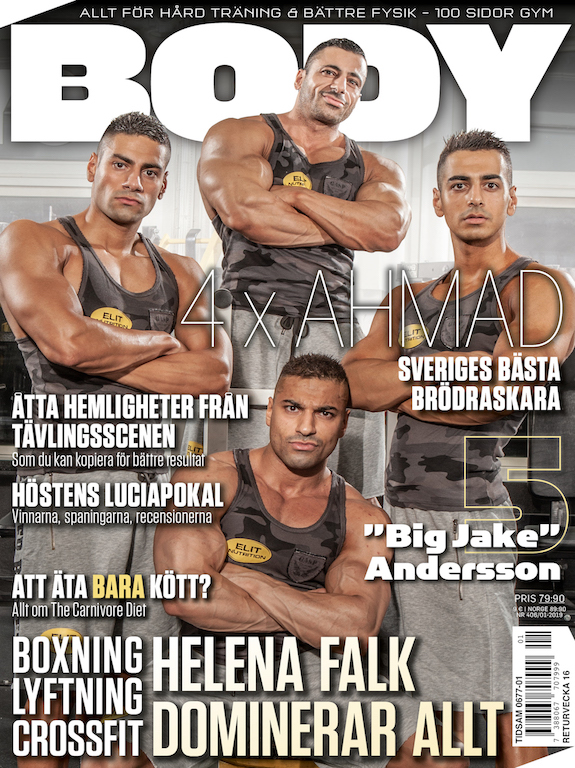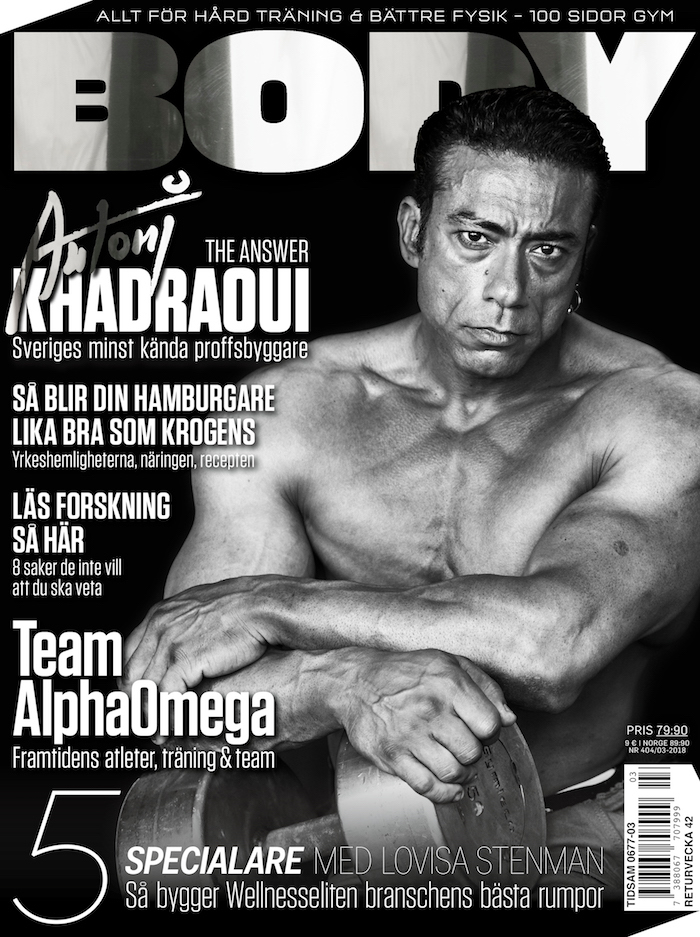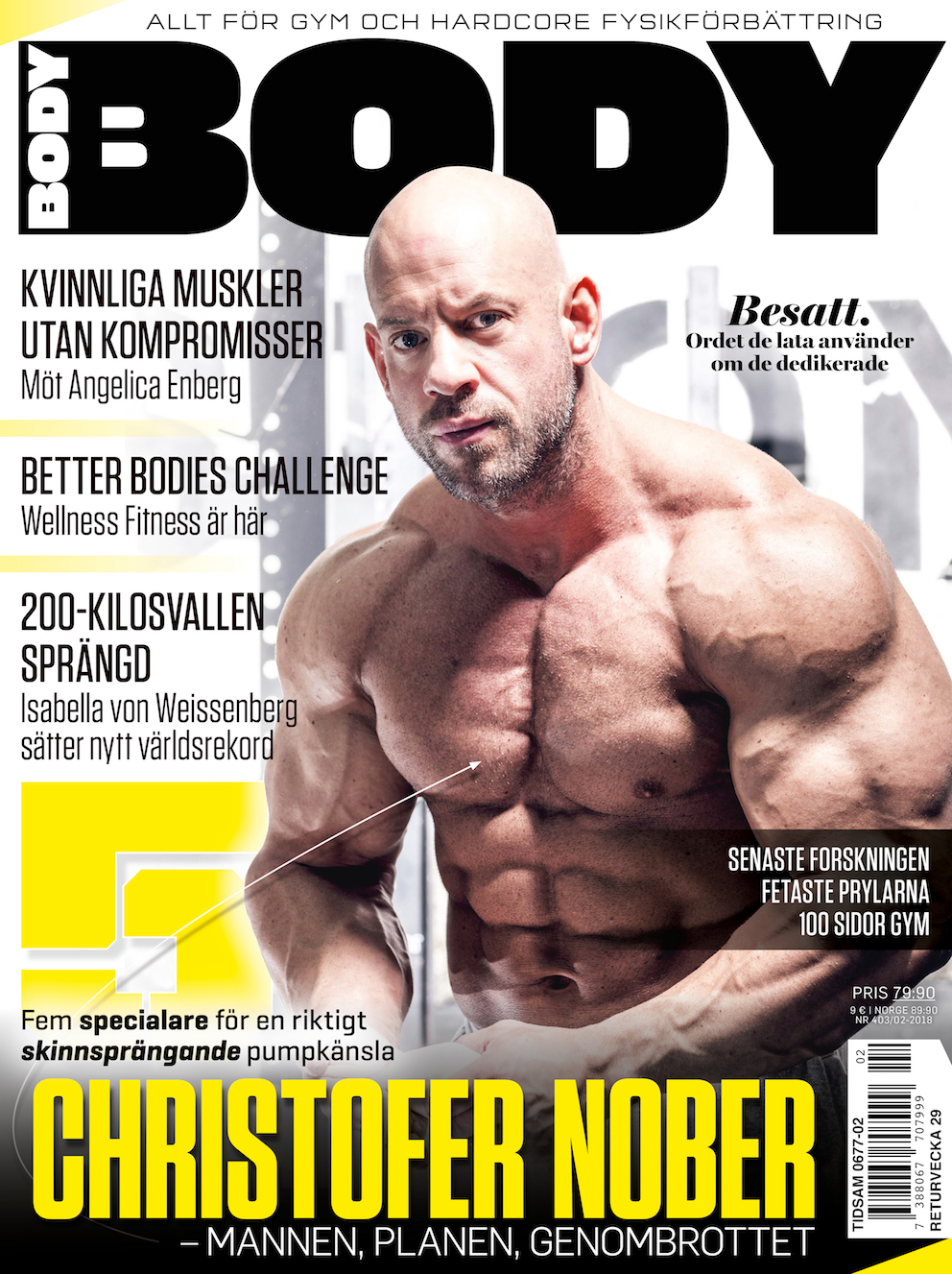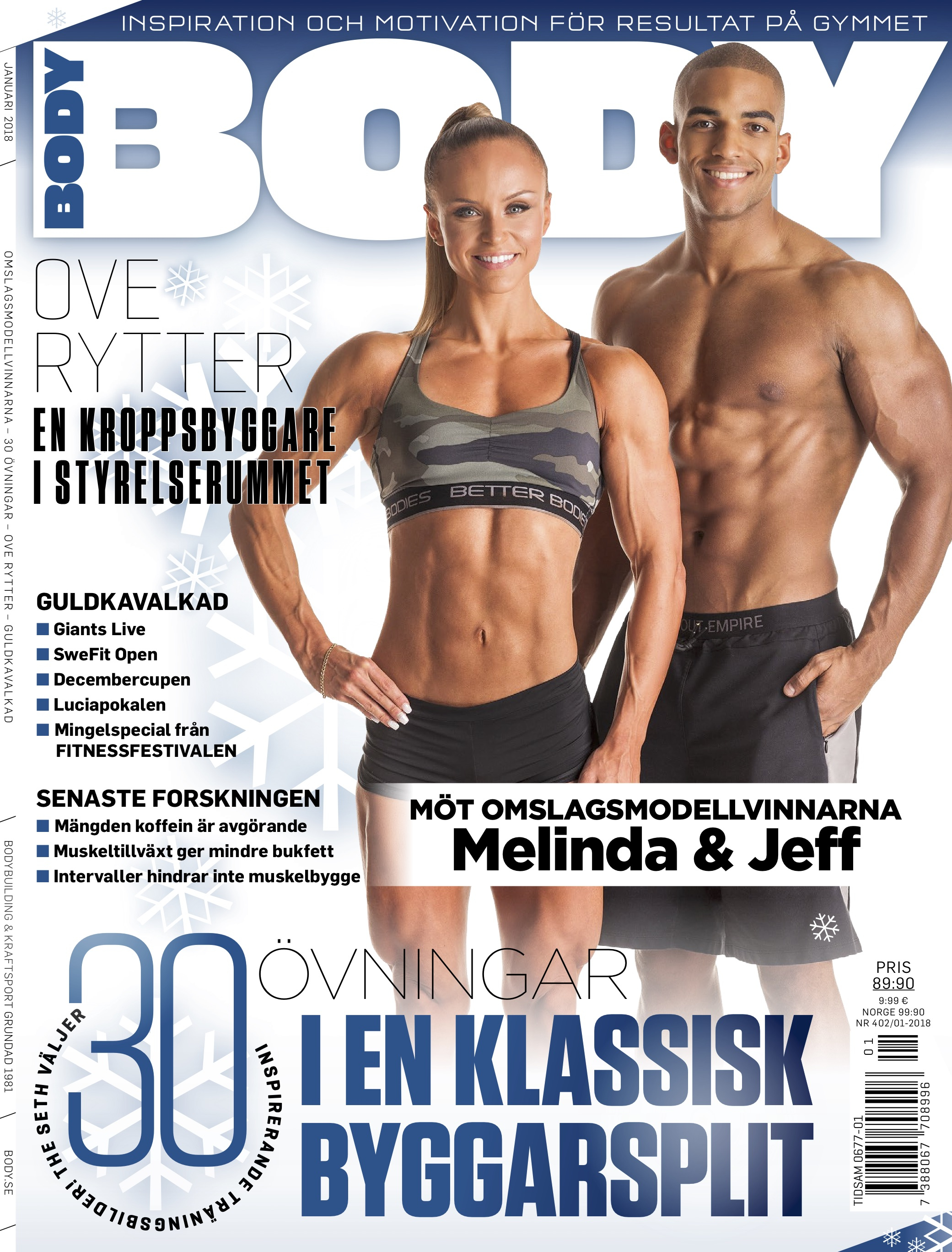Home › Forums › Styrkehörnan › Buktryck
- This topic is empty.
-
AuthorPosts
-
15 november, 2006 at 19:51 #88747
Anonym anvandare
Member15 november, 2006 at 19:51 #942927Anonym anvandare
MemberTror jag behöver träna på att få ett bra buktryck i marklyft. Tränar utan bälte, har resår i mina shorts

Men hur skall man göra, har sökt lite men förstår inte tex. hur man kan dra ner luft i ”magen”? Vore tacksam om någon kunde förklara tekniken bakom.
15 november, 2006 at 20:40 #942928Anonym anvandare
MemberPilen wrote:Tror jag behöver träna på att få ett bra buktryck i marklyft. Tränar utan bälte, har resår i mina shorts
Men hur skall man göra, har sökt lite men förstår inte tex. hur man kan dra ner luft i ”magen”? Vore tacksam om någon kunde förklara tekniken bakom.
Man drar inte ner luft i magen, man bara säger så. Du ska ta ett djupt andetag och trycka luften så långt ner som möjligt och spänna ut magen som du vore gravid:up:
15 november, 2006 at 21:22 #942929Anonym anvandare
MemberBernhard wrote:Man drar inte ner luft i magen, man bara säger så. Du ska ta ett djupt andetag och trycka luften så långt ner som möjligt och spänna ut magen som du vore gravid:up:Aha, då förstår jag. Är det bara att spänna på för kung och fosterland och hålla så under hela lyftet?
15 november, 2006 at 22:43 #942930Anonym anvandare
MemberJag sätter bältet något löst, dock inte för löst bara för att jag ska få plats för att kunna spänna ut magen. Dom som är lite mulliga om magen brukar spänna bältet hårdare eftersom skillnaden är mycket mindre när dom spänner ut magen jämfört med en smal som spänner ut magen.
15 november, 2006 at 22:53 #942931Anonym anvandare
MemberBernhard wrote:Jag sätter bältet något löst, dock inte för löst bara för att jag ska få plats för att kunna spänna ut magen. Dom som är lite mulliga om magen brukar spänna bältet hårdare eftersom skillnaden är mycket mindre när dom spänner ut magen jämfört med en smal som spänner ut magen.Samma utförande när man inte har något bälte?
15 november, 2006 at 23:03 #942932Anonym anvandare
MemberPilen wrote:Samma utförande när man inte har något bälte?Japp, man ska alltid spänna ut magen oavsett älte eller ej. Brukar även kallas för att ”blockera” (givetvis ska man spänna ryggen också)
16 november, 2006 at 10:13 #942933Anonym anvandare
MemberHm, jag vet inte om jag är överens med att man ska trycka ut magen. Jag gör tvärt om. Drar in magen någon centimeter, sedan spänner man hela paketet. Du ska fortfarande kunna andas med bibehållet tryck.
Nu är jag ingen styrkelyftare, så jag inväntar fler svar med intresse.16 november, 2006 at 12:30 #942934Anonym anvandare
MemberAtt dra in magen låter inte som någon bra idé. Genom att trycka ut magen blir du större runt midjan och därigenom stabilare och mycket starkare genom att magmusklerna får ett bättre moment. I knäböj vinner du också på att trycka ut magen genom att du får ett mothåll i bottenläget.
Bernhard har helt rätt i det han skriver. :up:
16 november, 2006 at 16:59 #942935Anonym anvandare
Membermini wrote:Hm, jag vet inte om jag är överens med att man ska trycka ut magen. Jag gör tvärt om.Hmm det gör jag också. Har aldrig hört talas om att dra ut magen, förrän jag hörde om det på kolo. Nu så även här.
Minis sätt var så jag intuitivt gjorde när jag började gymma. I Yoga så snackar de om två bhandas dvs lås; rotlåset och maglåset. Maglåset utförs på det sätt Mini beskriver, och de säger att de gör det för att skydda ryggen i krävande övningar.
Säger inte att ni har fel, men ni måste komma med väldigt övertygande argument för att ni ska få mig att ändra på min träning.
16 november, 2006 at 19:17 #942936Anonym anvandare
Memberstridis wrote:Hmm det gör jag också. Har aldrig hört talas om att dra ut magen, förrän jag hörde om det på kolo. Nu så även här.Minis sätt var så jag intuitivt gjorde när jag började gymma. I Yoga så snackar de om två bhandas dvs lås; rotlåset och maglåset. Maglåset utförs på det sätt Mini beskriver, och de säger att de gör det för att skydda ryggen i krävande övningar.
Säger inte att ni har fel, men ni måste komma med väldigt övertygande argument för att ni ska få mig att ändra på min träning.
:up:
Before setting up under the bar you’ll need to grasp the barbell and duck under it with your feet about shoulder width apart or slightly wider. While under the bar you’ll have to start to really tighten up. Grasp the bar with your hands and start to squeeze it as if you were trying to bend the bar across your back. Next, pull your shoulder blades together as tight as possible while pulling your elbows forward. This is to keep the upper back locked in this position during the lift. If your elbows are flaring out, it’ll cause the barbell to travel forward at some point during the lift. The key to squatting big weights is to keep the barbell path traveling in the shortest line as possible. Any deviation from this line will cause a missed lift.
Now that your upper back is tight you’ll need to tighten your midsection. First, expand your abdomen as much as possible. When you pull air into your body it should be into the diaphragm, not the chest. Expand you belly and push it out against your belt. This will stabilize and support the lower back and not elongate the spine. If you’re having a hard time trying to figure this out, then wear your weight belt one notch loose and push into it with your belly so it becomes tight.
Pushing your belly out goes against what many believe because they feel training this way will cause injuries to the lower back. After 30 years of box squatting Westside has had 23 lifters squat over 800 pounds, six over 900 pounds and one over a grand. Not one of these lifters or any of the others has had lower back problems.
Another aspect of this to keep in mind is the circumference of the waist line. If I suck my belly in my waist line measures 42 inches. If I pull air into my belly and push it out it measures 48 inches. The wider base the stronger the lifter. This is why lifters with a bigger waist squat more. The pyramids in Egypt are also built with a wide base and they have been standing for centuries. As the car commercials used to say, wider is better.
I learned this lesson firsthand at the 1990 Toledo Hall of Fame powerlifting competition. I’d just tried a 760 squat and got smashed with it. This was my second attempt of the day and I decided to give it another try on the third. I had some doubts because the second attempt wasn’t even close. Saying I got smashed is an understatement. The weight stapled me to the floor! I didn’t even get out of the bottom of the lift. This weight was a 20 pound personal record for which I had spent the last four months training.
I didn’t understand what the problem was or how to fix it. On the third attempt, while I was getting wrapped, Louie Simmons walked up to me and told me to get my abdominals tight. I had no idea what he was talking about at the time, but would within the next few minutes. As I got under the weight I realized Louie was the spotter behind me. (No pressure there, huh?) As I got set under the bar he told me to expand and push my belly into the belt. Now I understood what he was talking about. I was always told to flex my abs, but never to expand and push out.
As I set the bar up, I noticed that I had never felt so tight and stable. Once set, I locked in my back and began the squat. I kept my belly pushed into the belt and blasted the weight up! I had just smoked a weight that stapled me to the floor moments earlier all because I learned how to use my abdominals! In my opinion, this concept is one of the most misunderstood in the sport of powerlifting today. Many lifters don’t know how to use their core to set up a squat. Some do nothing at all while others are trying to suck their stomachs in. This is probably fine for those who strive to squat 400 pounds, but if you’re looking to squat maximal weights in the 700 to 900 range, you’d better learn how to use your core.
All the power of the lower body is transferred through your core to the barbell. If this core isn’t tight the power will ”get lost” so to speak and never travel to the bar. While I don’t agree with the use of a belt for the majority of training, I do believe in the use of belts to teach a person how to use the abdominals while squatting. The belt is a training aid in competition, so you must learn how to use it to its fullest advantage.
16 november, 2006 at 19:56 #942937Anonym anvandare
MemberAlex Thunholm wrote::up:Before setting up under the bar you’ll need to grasp the barbell and duck under it with your feet about shoulder width apart or slightly wider. While under the bar you’ll have to start to really tighten up. Grasp the bar with your hands and start to squeeze it as if you were trying to bend the bar across your back. Next, pull your shoulder blades together as tight as possible while pulling your elbows forward. This is to keep the upper back locked in this position during the lift. If your elbows are flaring out, it’ll cause the barbell to travel forward at some point during the lift. The key to squatting big weights is to keep the barbell path traveling in the shortest line as possible. Any deviation from this line will cause a missed lift.
Now that your upper back is tight you’ll need to tighten your midsection. First, expand your abdomen as much as possible. When you pull air into your body it should be into the diaphragm, not the chest. Expand you belly and push it out against your belt. This will stabilize and support the lower back and not elongate the spine. If you’re having a hard time trying to figure this out, then wear your weight belt one notch loose and push into it with your belly so it becomes tight.
Pushing your belly out goes against what many believe because they feel training this way will cause injuries to the lower back. After 30 years of box squatting Westside has had 23 lifters squat over 800 pounds, six over 900 pounds and one over a grand. Not one of these lifters or any of the others has had lower back problems.
Another aspect of this to keep in mind is the circumference of the waist line. If I suck my belly in my waist line measures 42 inches. If I pull air into my belly and push it out it measures 48 inches. The wider base the stronger the lifter. This is why lifters with a bigger waist squat more. The pyramids in Egypt are also built with a wide base and they have been standing for centuries. As the car commercials used to say, wider is better.
I learned this lesson firsthand at the 1990 Toledo Hall of Fame powerlifting competition. I’d just tried a 760 squat and got smashed with it. This was my second attempt of the day and I decided to give it another try on the third. I had some doubts because the second attempt wasn’t even close. Saying I got smashed is an understatement. The weight stapled me to the floor! I didn’t even get out of the bottom of the lift. This weight was a 20 pound personal record for which I had spent the last four months training.
I didn’t understand what the problem was or how to fix it. On the third attempt, while I was getting wrapped, Louie Simmons walked up to me and told me to get my abdominals tight. I had no idea what he was talking about at the time, but would within the next few minutes. As I got under the weight I realized Louie was the spotter behind me. (No pressure there, huh?) As I got set under the bar he told me to expand and push my belly into the belt. Now I understood what he was talking about. I was always told to flex my abs, but never to expand and push out.
As I set the bar up, I noticed that I had never felt so tight and stable. Once set, I locked in my back and began the squat. I kept my belly pushed into the belt and blasted the weight up! I had just smoked a weight that stapled me to the floor moments earlier all because I learned how to use my abdominals! In my opinion, this concept is one of the most misunderstood in the sport of powerlifting today. Many lifters don’t know how to use their core to set up a squat. Some do nothing at all while others are trying to suck their stomachs in. This is probably fine for those who strive to squat 400 pounds, but if you’re looking to squat maximal weights in the 700 to 900 range, you’d better learn how to use your core.
All the power of the lower body is transferred through your core to the barbell. If this core isn’t tight the power will ”get lost” so to speak and never travel to the bar. While I don’t agree with the use of a belt for the majority of training, I do believe in the use of belts to teach a person how to use the abdominals while squatting. The belt is a training aid in competition, so you must learn how to use it to its fullest advantage.
Fan Alex, man kan ju nästan tro att det finns en liten styrkelyftare inom dig
 16 november, 2006 at 20:10 #942938
16 november, 2006 at 20:10 #942938Anonym anvandare
MemberMelin wrote:Fan Alex, man kan ju nästan tro att det finns en liten styrkelyftare inom dig
vill ha muskler men vara stark med
 16 november, 2006 at 21:02 #942939
16 november, 2006 at 21:02 #942939Anonym anvandare
MemberKlockrent!
Så sluta suga in magen nu och tryck stolt ut den i färdriktningen istället så kommer vikterna flyga och skadorna hålla sig borta! :up:16 november, 2006 at 21:17 #942940Anonym anvandare
MemberKörde mark idag, har tydligen alltid tryckt ut magen bara att jag inte har tänkt på det. Men tack ändå för alla svar.
Och med Alex Thunholm inklistrade text så fick vi svaret varför tungviktarna (och Obelix) har så stor midjeomfång. :up:
-
AuthorPosts
- You must be logged in to reply to this topic.






